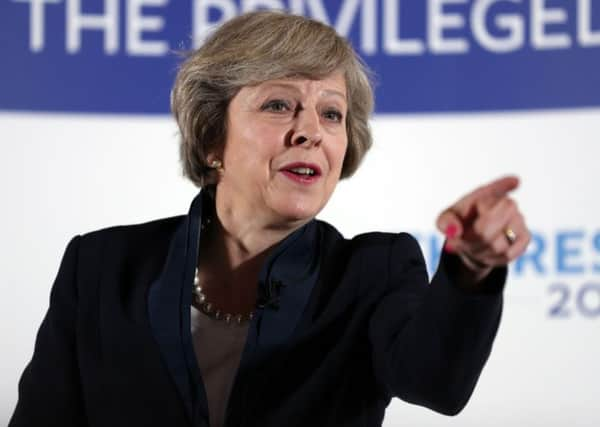What's waiting in Theresa May's Downing Street in-tray?


If the meeting with the Queen and the speech on the steps of Downing Street was not enough to give her an early sense of how very different the top job is to any other role in Government, then the briefing on the Trident nuclear deterrent and the cabinet secretary’s request that she write letters to the commanders of the four submarines which carry it with instructions on what to do in the event they cannot contact home will certainly focus her mind.
Having written the so-called “letters of last resort” her mind will turn to forming a Government and its agenda.
Advertisement
Hide AdAdvertisement
Hide AdOutside of war time, a prime minister would typically expect the economy to be the top item in their in-tray but for Mrs May the issue that will dominate the early years her premiership is the same one that ultimately brought her to power, Britain’s departure from the European Union.
As someone who campaigned, albeit in a rather low-key fashion, for Remain her priority during the leadership race has been to reassure the Leave wing of the party that she will not try to wriggle out of Brexit.
But now ensconced in Downing Street her approach to Europe will need to be fleshed out rapidly.
In particular, she will need to decide on a minister to lead the Brexit negotiations, an appointment that needs to reassure both Eurosceptics and also gives European Union officials and European leaders confidence that this is someone with which they can do business.
Advertisement
Hide AdAdvertisement
Hide AdMrs May will also come under pressure to set out a timetable for when the Brexit negotiations will get underway through the triggering of Article 50 of the Lisbon Treaty.
Although the economy will not be item number one on her agenda, it will be a high priority and here there is much work to do too.
Overshadowed by subsequent events, in response to concerns over the economy George Osborne’s Budget in March saw the Government announce a further £3.5bn of savings just months after setting out spending plans for the whole of this parliament.
The move underlined how vulnerable Mr Osborne’s spending plans were to economic change and that was further emphasised when in the aftermath of the Brexit vote he dropped the target to have the Government’s books on day-to-day spending in surplus by 2020.
Advertisement
Hide AdAdvertisement
Hide AdWith her new chancellor, Mrs May will have to decide whether she will continue to pursue a surplus target or take a more flexible approach to spending.
From Yorkshire’s perspective, the region will want to see early signs from Mrs May of her commitment to reducing the size of what she, in her leadership campaign speech yesterday morning, called the “gaping chasm between a wealthy London and the rest of the country”.
There will be intrigue in the region too at her call for “a plan to help not one or even two of our great regional cities but every single one of them” among council leaders in Yorkshire concerned that Manchester has dominated the “northern powerhouse” debate.